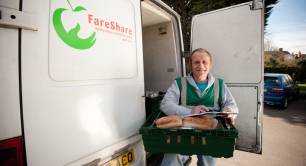SITR: low uptake, poor design – but foundations worth building on?
Social Investment Tax Relief was introduced in 2014 in an effort to make the UK ‘the easiest place in the world to invest in social enterprise’. Four years later, just 63 deals had made use of it. David Floyd explains why uptake has been so low – and what needs to happen now
You’ve got a great idea for a social venture. You don’t have lots of savings and your friends and family are not wealthy. You look for grant funding but social enterprise support providers are only offering £5,000 and your venture will cost a lot more than that to launch. If only the government was doing something to help…
In theory, it is. Social Investment Tax Relief (SITR) is a tax break for individuals who make unsecured investments into charities and social enterprises. These investors get 30% of the value of their investment off their next income tax bill. This means they can take bigger risks, on the basis that they’re guaranteed to get at least some of their money back.
SITR launched in 2014 with high expectations from both government and social sector leaders that it would make it far easier for new social organisations to get up and running, and for existing ones to try out new income-generating ideas.
It offers a clear alternative to the existing intermediary-led social investment market. While the relief can be used to create funds, it can also help charities and social enterprise to create their own investment offers – either through crowd platforms such as Ethex or Crowdfunder, or by approaching potential investors directly.
My new report for Social Investment Business looks at what’s happened since SITR was launched. So far, it’s not going well. While the Treasury predicted £83.3 million worth of investment in its first three years of operation, the actual figure was £5.1 million – and after over four years of activity, only 63 deals had been completed. On reading the report, one leading commentator noted that the chances of being involved in an SITR deal were significantly smaller than the chances of being attacked by a shark.
Poor design – and delays
It is possible that SITR is not working either because charities and social enterprises don’t want investment and/or because investors don’t want to invest into charities and social enterprises. But my discussions with social entrepreneurs, intermediaries and advisers suggest otherwise.
One of the key factors currently inhibiting the use of SITR is that it has been poorly designed and implemented. The government is understandably wary of the relief being misused for property speculation and other dodgy schemes with no social purpose. Unfortunately, its solution to this problem has been to exclude investment in property (plus other activities including energy and leasing) from eligibility.
So, if you want to raise investment to buy and renovate empty properties in your local area using SITR, you can’t. Given that Big Society Capital’s deal level data shows investment into ‘housing and local facilities’ accounts for more 50% of the value of all social investment, that’s a major problem.
But the government’s unintentional self-sabotage has not been restricted to these (and several other more complicated) technical restrictions. Poor design has been compounded with poor implementation: changes to the legislation since 2014 have been delayed and poorly communicated, and the process of applying to HMRC for Advance Assurance (to make sure that your investors will be eligible for SITR) has been subject to lengthy delays.
Bright spots
Fortunately, this negative picture is only part of the story. My research suggests that a second key factor in SITR’s lack of success so far is that not many charity and social enterprise leaders have even heard of it.
Above: Shofar Daycare Nursery, which used SITR to get up and running
On the other hand, among the relatively small number who do know it exists there are already some impressive success stories. Matt Fountain used SITR to raise an initial £45,000 from seven investors to support the launch of Freedom Bakery. Paul Israel of Shofar Day Care Nursery raised £200,000 directly from 25 investors to get the nursery up and running, and Marie Osborne from Future Wolverton raised over £122,666 from 125 people via the online platform, Ethex.
Even with all the current drawbacks, SITR is already helping some charities and social enterprises to raise investment on their own terms. The government is planning a review of the relief in the near future. Hopefully, they will take practical action to make SITR is fully fit for purpose. Even if they don’t, it’s still possible for investees to make better use of the relief in its current form.
It’s time for charities and social enterprises to do more to find out what SITR can offer them. And for intermediaries and infrastructure bodies to work together to help connect investees and investees. Then a (hopefully) improved SITR can help more organisations get the risk finance they need to achieve more social impact.
Read the full report from Social Investment Business here.


